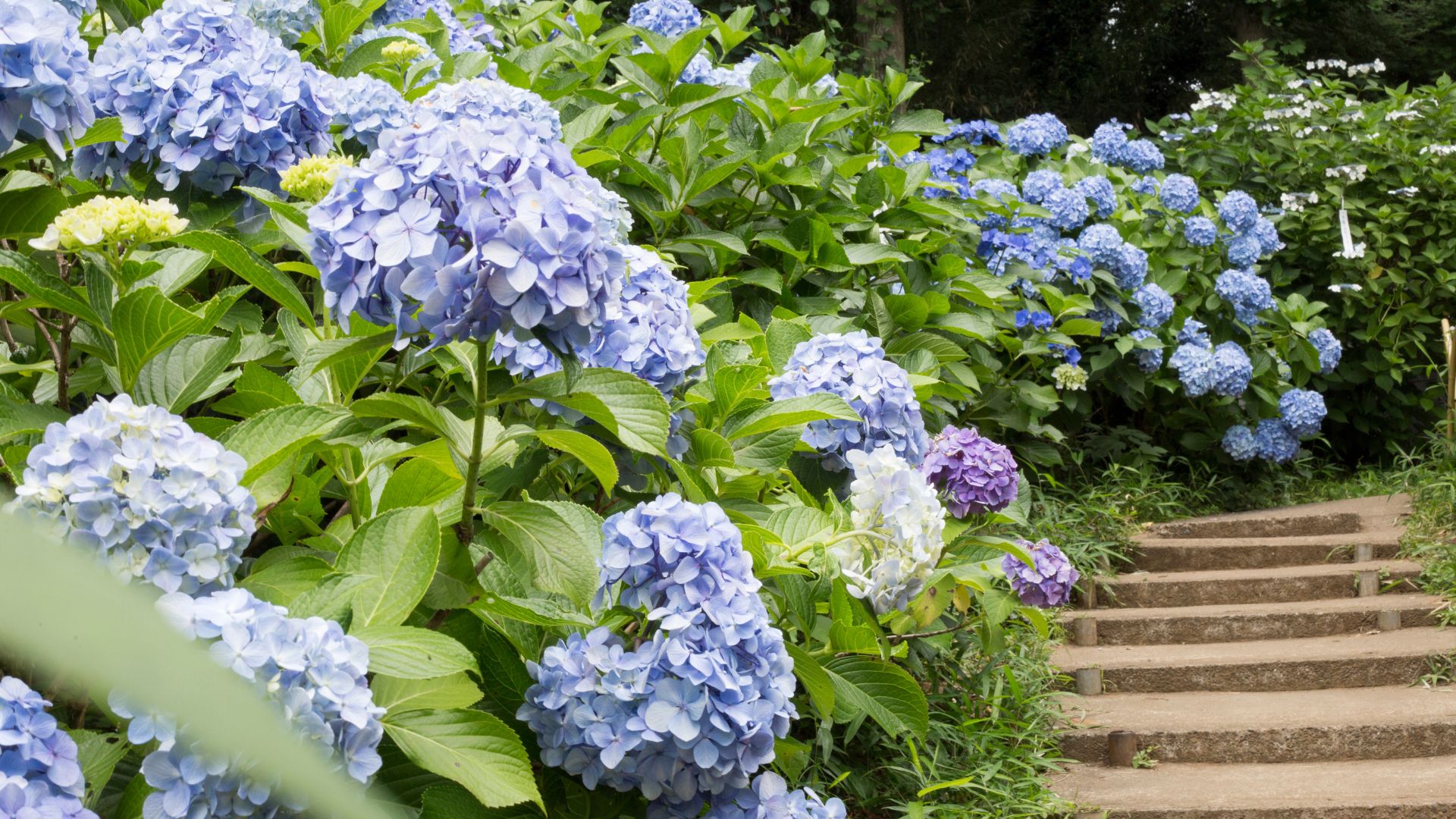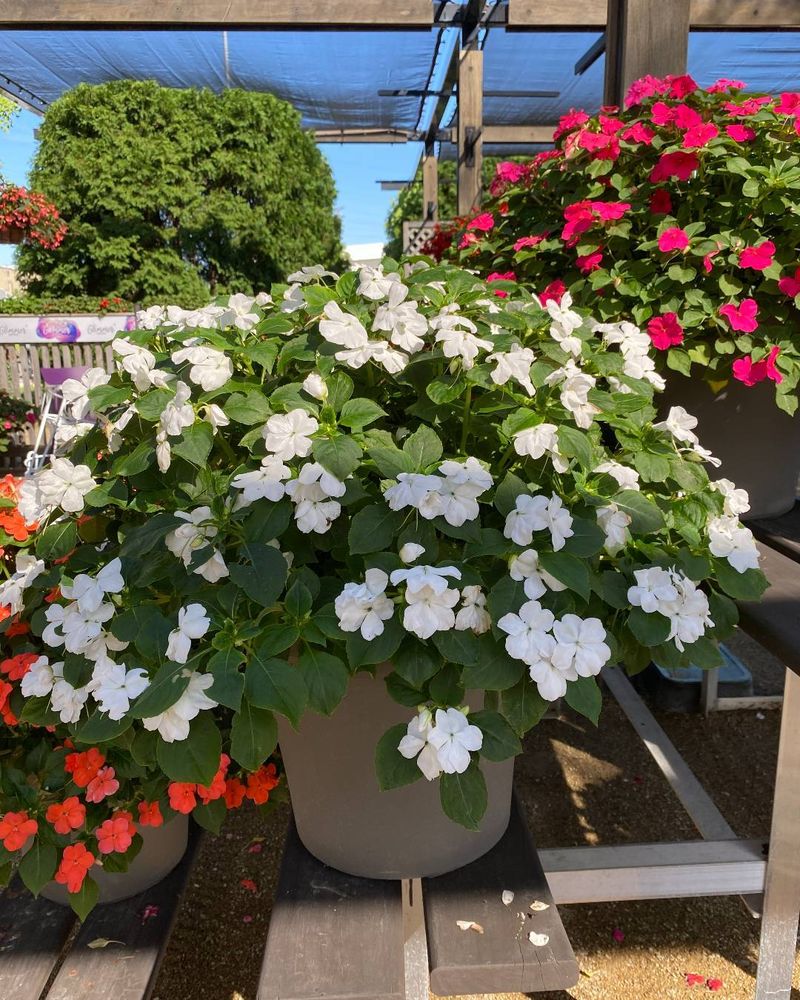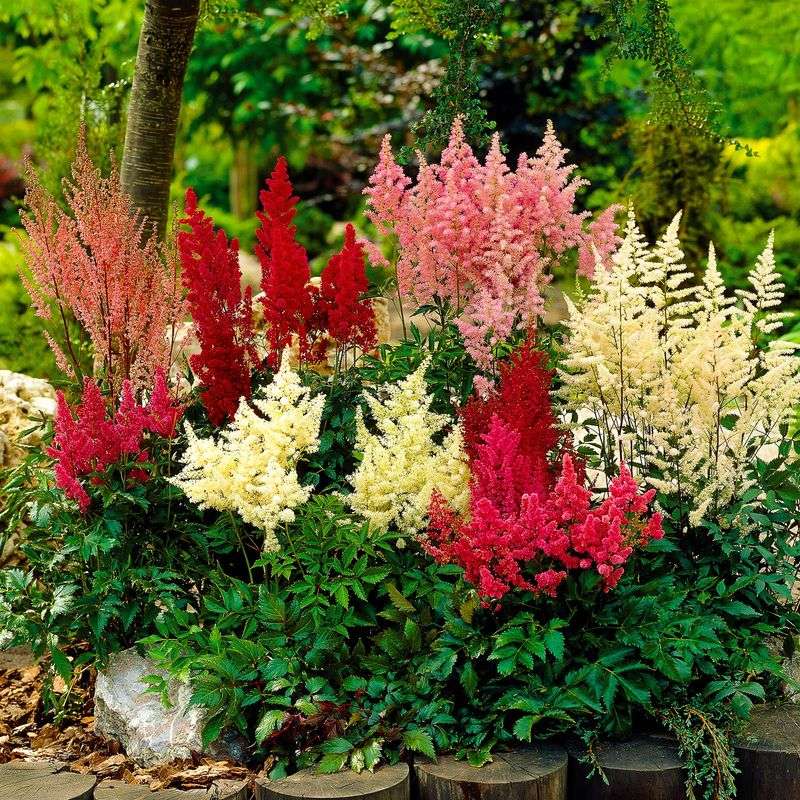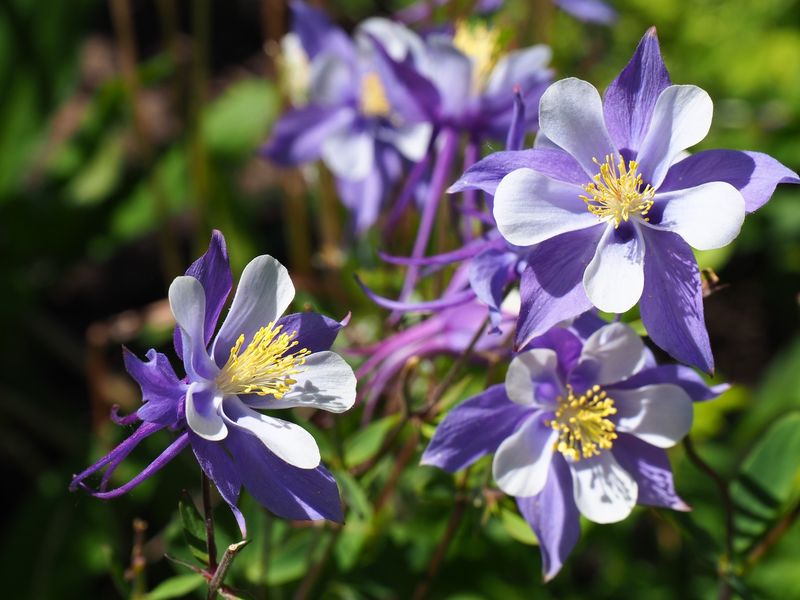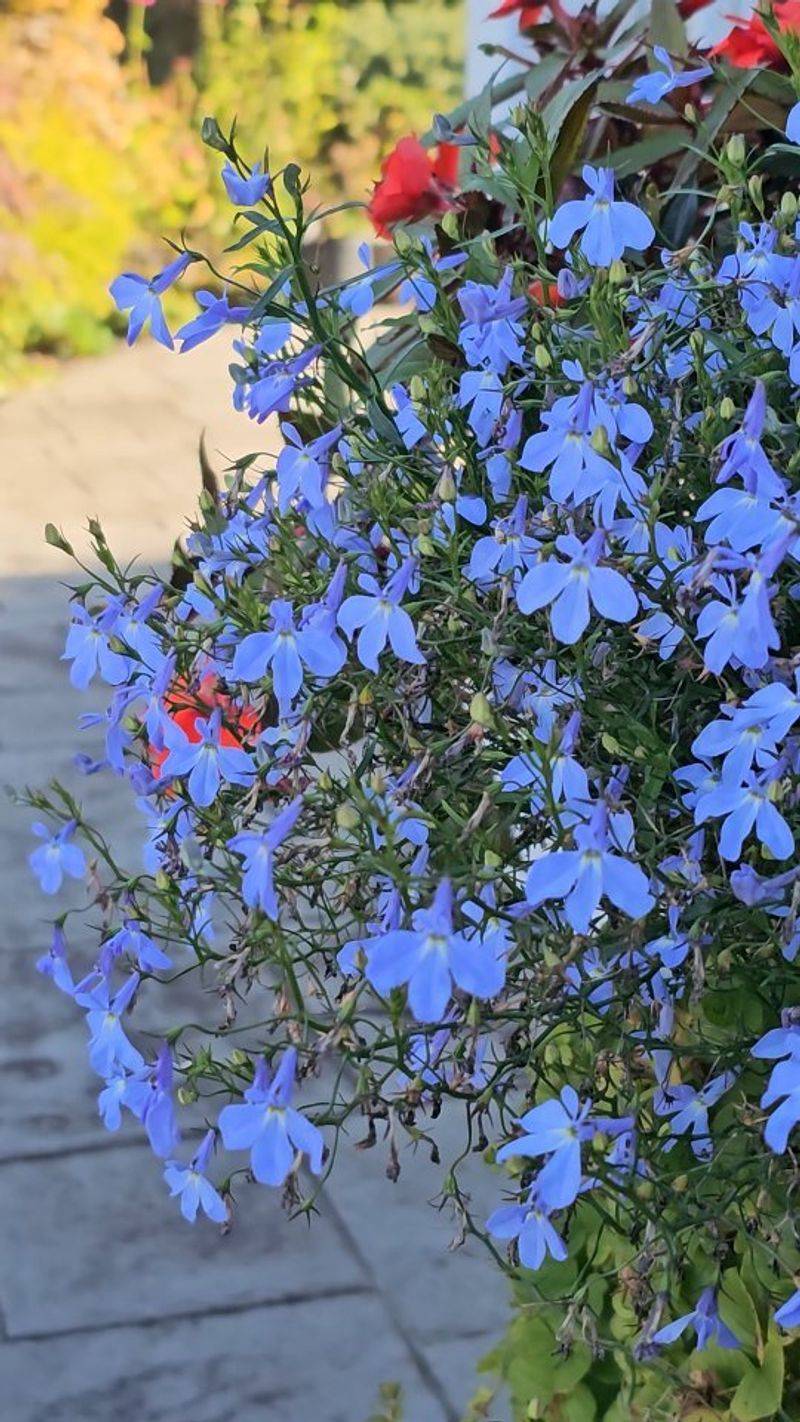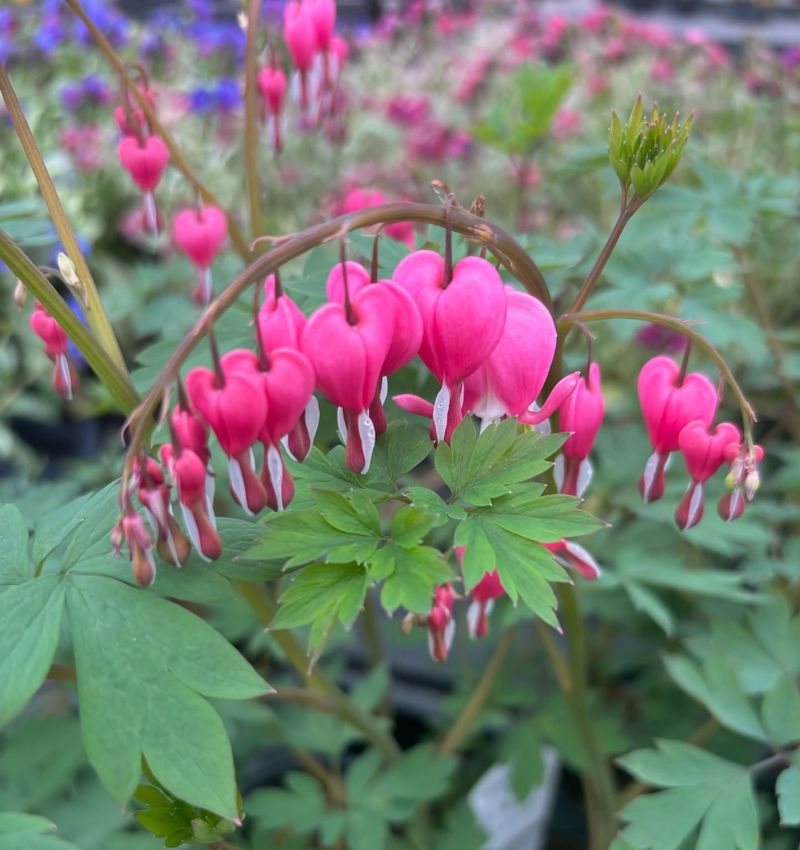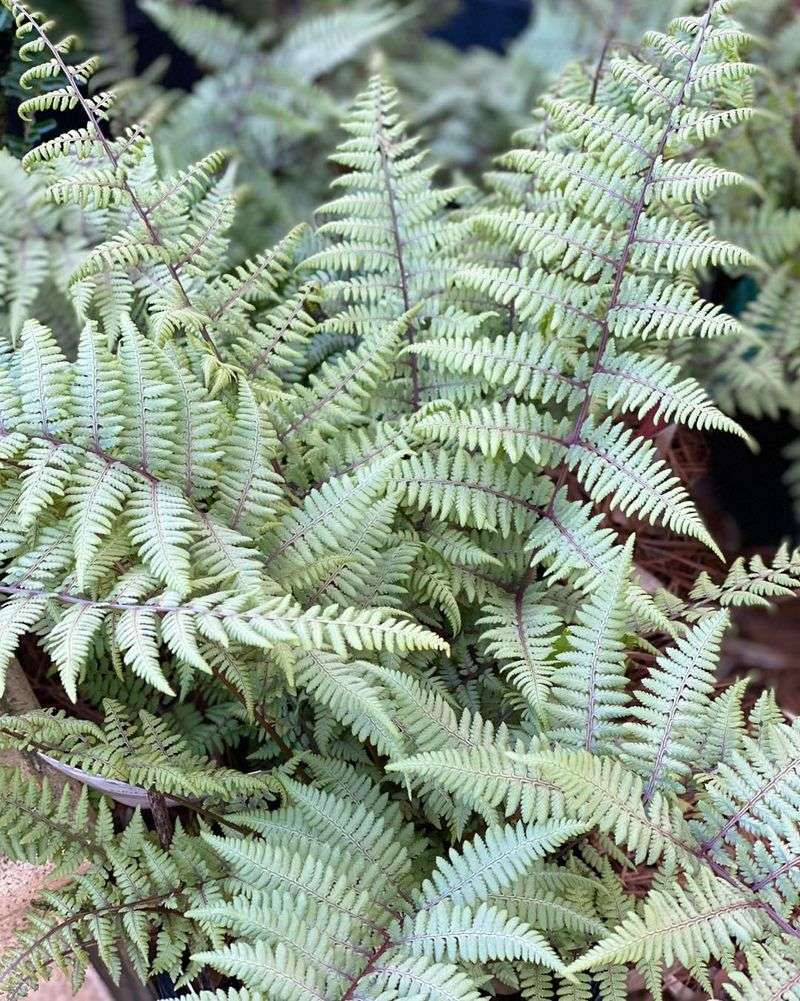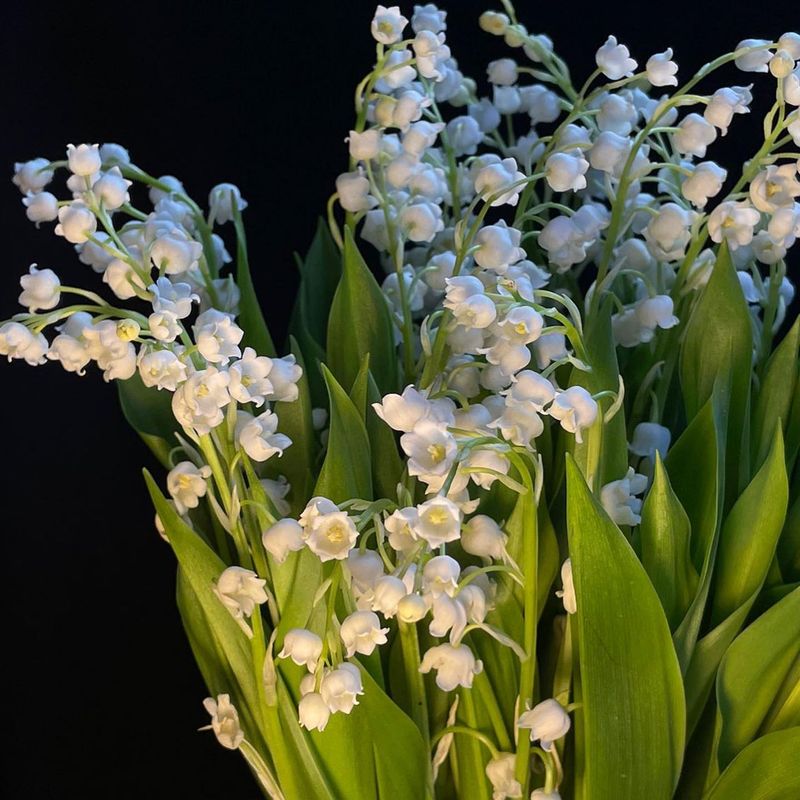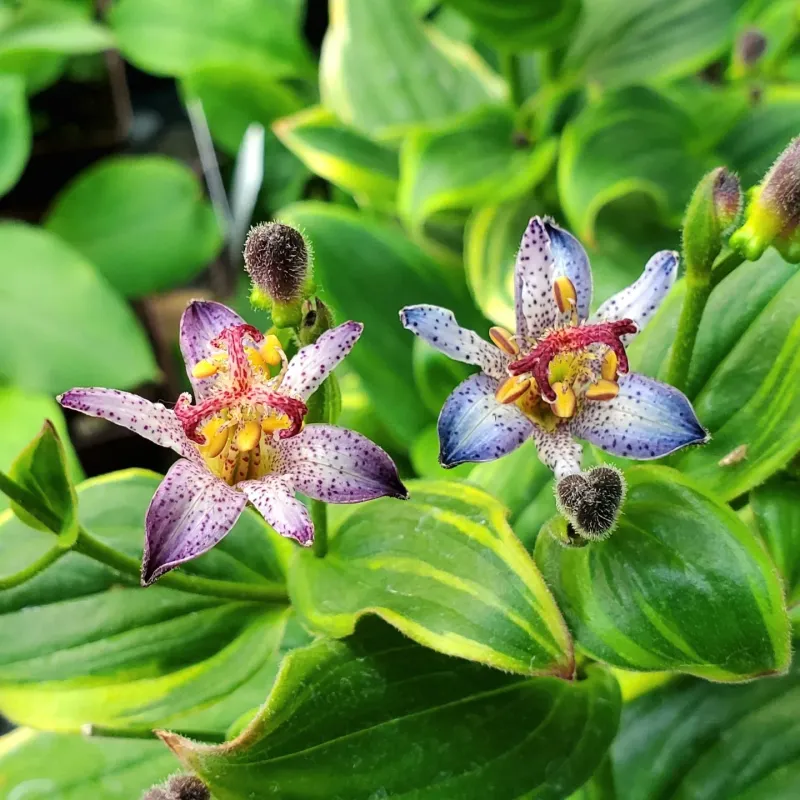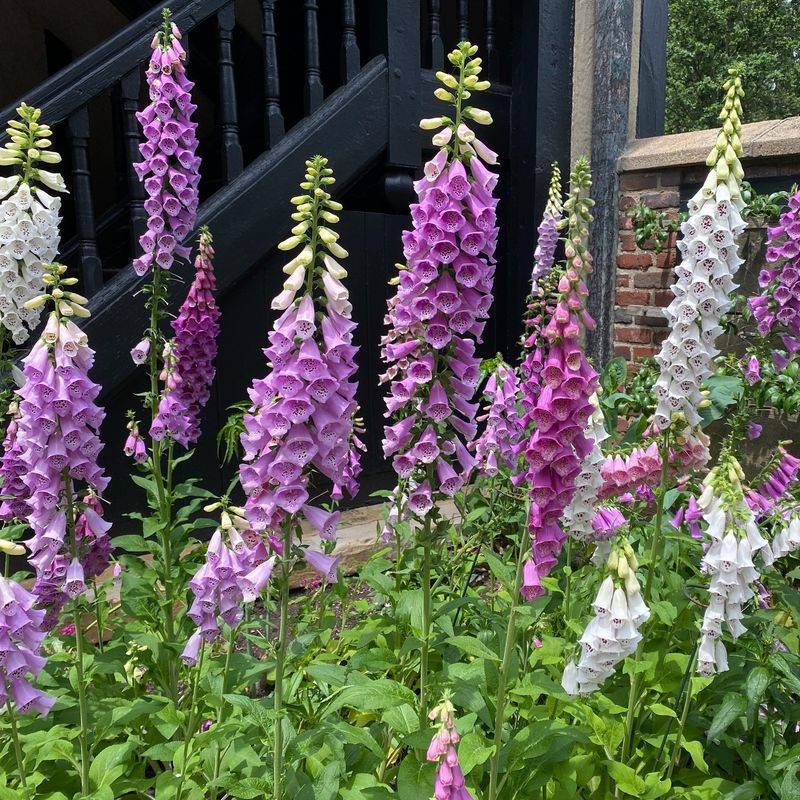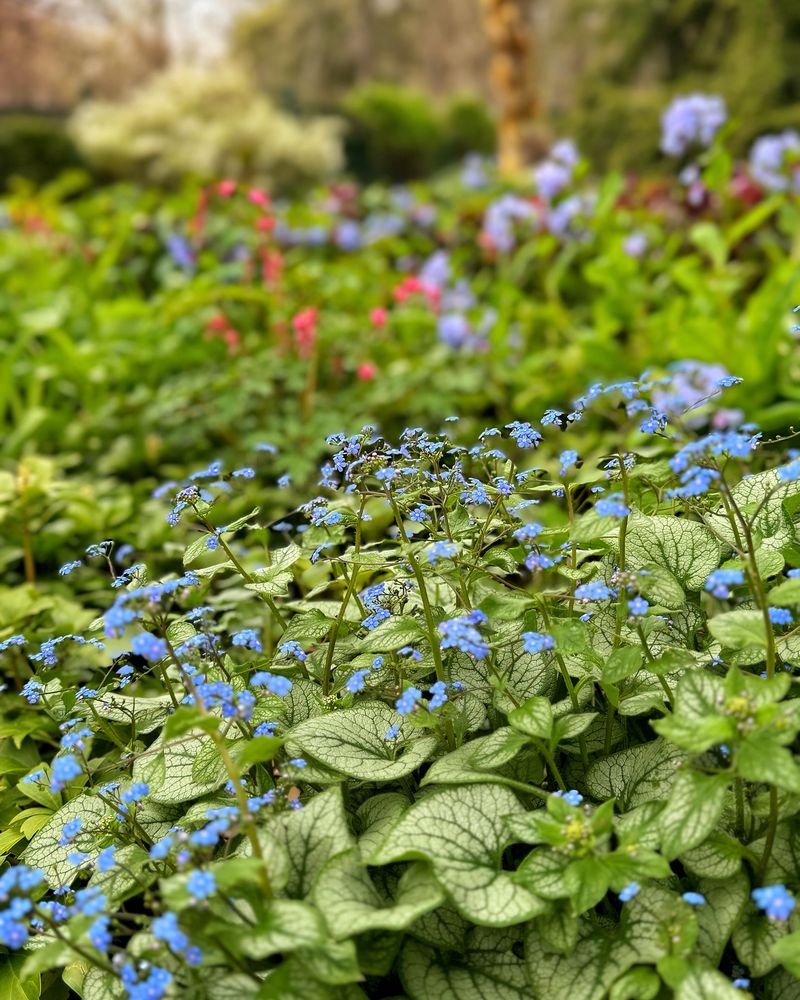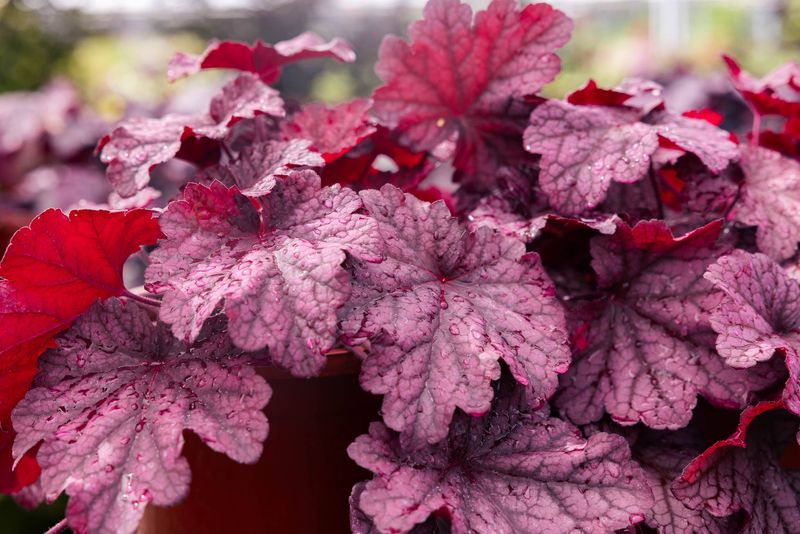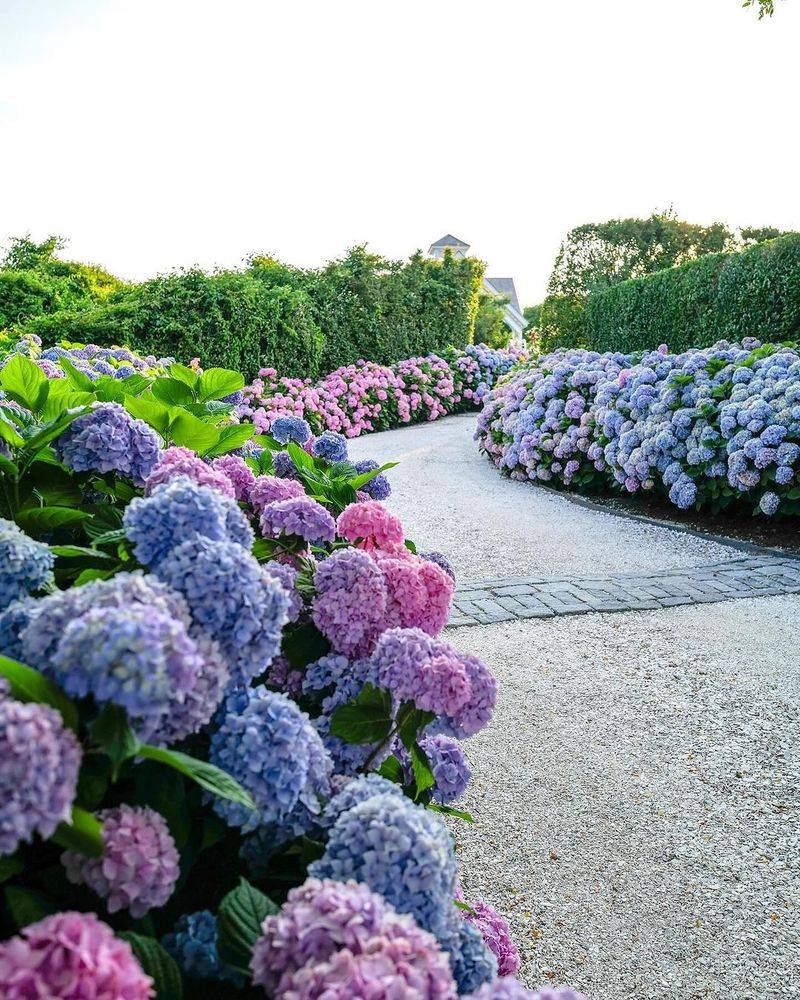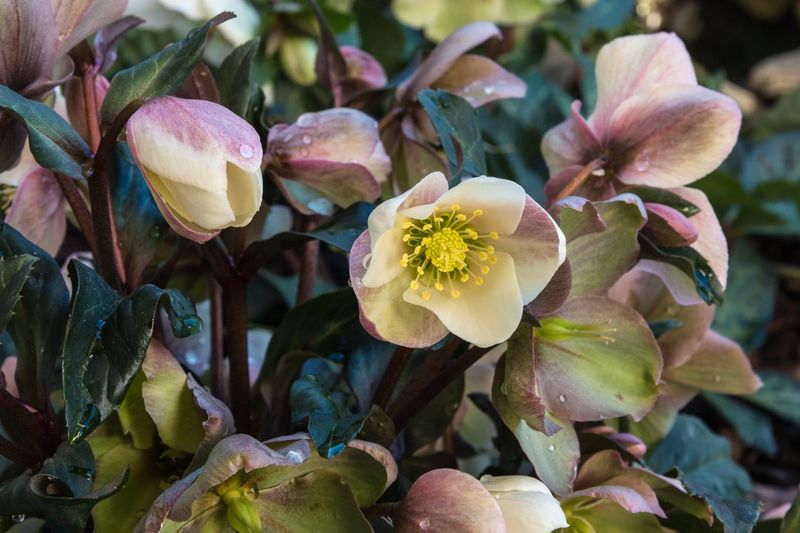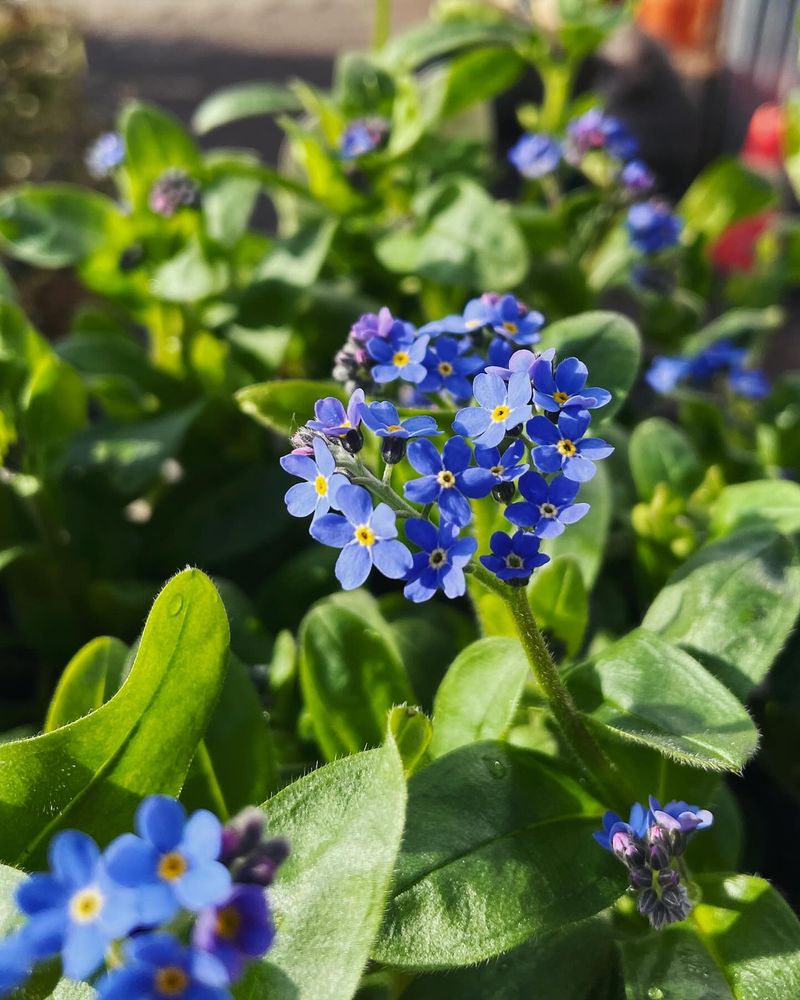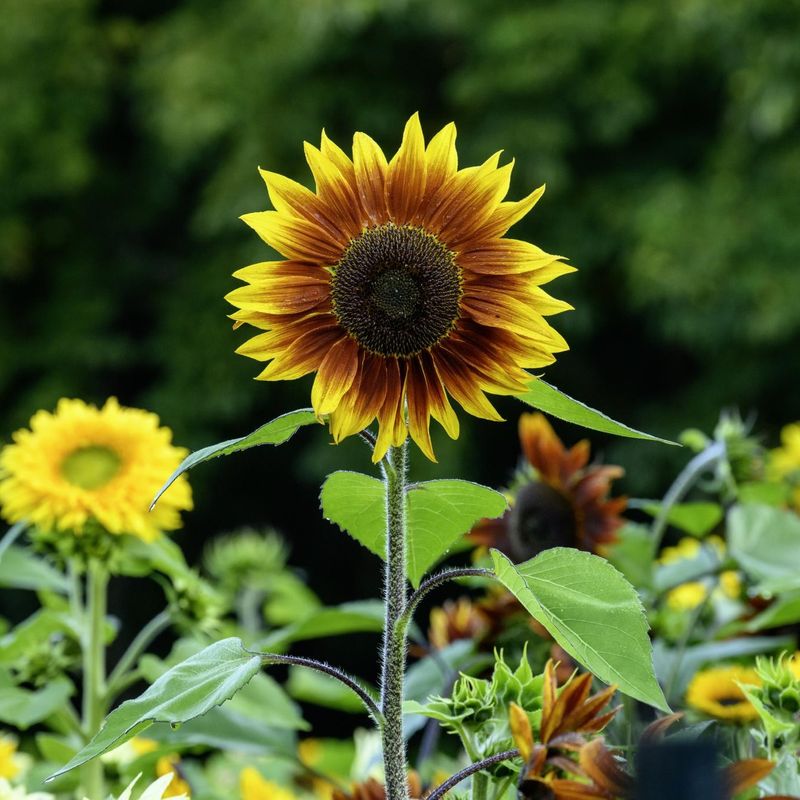Creating a beautiful garden in shady spots isn’t just a dream—it’s totally doable with the right flowers. In this guide, I’ll share some down-to-earth tips on growing beautiful blooms from seed that will thrive in low-light areas.
Whether you’re drawn to the bright pop of impatiens or the delicate charm of bleeding hearts, I’ve got you covered with flowers that will add color and life to your shaded spaces.
I’ll also help you avoid common mistakes, like planting sun-loving varieties that just won’t make it in the shade. Let’s make that shady corner of your garden bloom!
1. Impatiens
Brightening up any shady corner, impatiens are a gardener’s delight. These annuals thrive in moist, well-drained soil, making them perfect for beds or containers. Start indoors to give seedlings a head start, then transplant when the weather warms.
Whether in soft pastels or vivid colors, impatiens bring a splash of brightness to shaded areas. Their carefree blooms last all season, providing consistent color. Perfect for those looking to add life without too much sun.
With minimal fuss, impatiens adapt well to varying light conditions, as long as there’s no harsh direct sunlight. They’re a reliable choice for any shade garden.
2. Astilbe
These are the epitome of elegance in shaded gardens. Their feathery plumes, ranging from pink to deep red, add soft texture and height. Requiring moist soil, they perform best in dappled shade. Begin seeds indoors to ensure robust plants by spring.
Astilbes’ long-lasting blooms and fern-like leaves enhance woodland gardens. They require little care once established, making them ideal for busy gardeners. Tolerating both heat and cold, these flowers impress season after season.
Their understated beauty offers a serene aesthetic, transforming quiet corners into displays of nature’s artistry. A sophisticated choice for any shade space.
3. Columbine (Aquilegia)
Thriving in partial shade, these perennials can be sown directly outdoors in early spring. Their delicate flowers, available in a mix of colors, sway gracefully in the breeze.
Columbines are not only visually striking but also attract hummingbirds. These plants require well-drained soil and appreciate a cool, sheltered spot. Easy to grow and care for, they are a favorite among gardeners.
With their airy appearance, columbines fill shaded areas with charm and color. They are a picturesque addition to any garden setting, offering a dreamy atmosphere.
4. Lobelia
Known for its trailing habits and blue or white flowers, it’s perfect for containers or hanging baskets. Preferring partial shade, lobelia thrives in moist, consistently watered soil.
Start seeds indoors, then enjoy blooms that cascade gracefully throughout summer. Its compact size makes it ideal for edging borders. Lobelia’s subtle beauty enhances any shaded area without overpowering it.
Ideal for those with limited space, its delicate appearance belies its resilient nature. A charming choice for patios or small garden areas, lobelia brings understated elegance to any space.
5. Bleeding Heart (Dicentra)
Bleeding hearts enchant with their heart-shaped blooms, adding romance to shaded gardens. Best in dappled shade, they thrive in cooler climates with rich, well-drained soil.
Their pendulous pink or white flowers hang delicately from arching stems, offering a fairy-tale charm. Bleeding hearts require minimal maintenance once established, making them gardener-friendly. Perfect for woodland settings, they blend effortlessly into natural landscapes.
These perennials die back in midsummer, only to return the following spring, ensuring their magic endures. With their captivating appearance, they transform shady spots into enchanting retreats, adding a touch of whimsy and elegance.
6. Hosta
Hostas are treasured for their foliage and adaptability to shade. Their leaves, ranging in color from deep green to variegated white, create texture and interest. Plant them in moist, well-drained soil, where they thrive with minimal care.
Hostas are perfect for borders or as ground cover in shady areas. Over time, they form dense clumps, providing excellent coverage. Though primarily grown for foliage, some varieties offer lavender blooms.
These hardy perennials withstand cooler climates and return annually. Ideal for those seeking low-maintenance beauty, hostas bring greenery and elegance to shaded gardens with ease.
7. Ferns
Ferns are the quintessential choice for creating a woodland feel in shady gardens. Their fronds, varying in texture and size, add depth and movement. Fussy about their surroundings, they prefer moist, rich soil and a cool, shaded environment.
Whether planted en masse or nestled among rocks, ferns offer an effortless grace. Their natural, unassuming beauty complements any garden style. With minimal care, they thrive and spread, providing consistent greenery.
Ideal for adding texture, they create a calming, serene atmosphere. Suitable for beginners and experienced gardeners alike, ferns are a timeless addition to any shaded area.
8. Lily of the Valley
This is a classic choice for adding fragrance to shaded spots. Known for its dainty, bell-shaped white flowers, this perennial thrives in cool, shaded environments. Plant in moist, well-drained soil, and it will return year after year.
Its sweet scent and elegant appearance make it a favorite for woodland gardens. Lily of the Valley spreads over time, creating a carpet of green foliage. Perfect for those who appreciate subtle beauty and charm, it adds a touch of nostalgia.
Ideal for borders and ground cover, this plant transforms shady areas with its enchanting presence.
9. Toad Lily
These add exotic flair to shaded gardens with their speckled, orchid-like blooms. These perennials thrive in moist, well-drained soil and are perfect for woodland settings. Their unique flowers appear in late summer to fall, providing interest when other plants fade.
Planting toad lilies offers a touch of the unexpected, with blooms that captivate and intrigue. They require minimal care, making them ideal for gardeners seeking low-maintenance options.
Toad lilies blend well with ferns and hostas, enhancing the overall aesthetic. Their distinct appearance and timing make them a valuable addition to any shade-loving garden.
10. Foxglove
This flower brings height and drama to shaded areas with their towering spires of tubular flowers. Thriving in partial shade, these biennials prefer rich, well-drained soil. Starting seeds indoors ensures a strong start, with blooms appearing in the second year.
Foxgloves’ striking appearance attracts hummingbirds, adding life to the garden. Although they are visually stunning, caution is needed as all parts of the plant are toxic if ingested.
Perfect for the back of shady borders or as a statement plant, they create vertical interest. Their elegant blooms add a cottage garden feel, enriching any shaded space.
11. Brunnera
This one is cherished for its heart-shaped leaves and clusters of tiny blue flowers resembling forget-me-nots. Ideal for shady spots, it thrives in moist, well-drained soil. Offering beauty from spring to autumn, its foliage remains attractive even after flowering.
Brunnera’s ability to withstand varying conditions makes it a gardener’s favorite. Its delicate flowers add a touch of whimsy, while the foliage provides texture and interest. Perfect for borders or as ground cover, brunnera blends seamlessly with other shade-tolerant plants.
This perennial is a reliable and charming addition to any shaded garden, enhancing its serene atmosphere.
12. Japanese Anemone
Japanese anemones bring elegance and late-season blooms to shaded gardens. Thriving in partial shade, they prefer well-drained soil and offer flowers from late summer to autumn. These perennials are perfect for extending the garden’s color palette.
With minimal care, they establish quickly, spreading over time to form clumps. Japanese anemones’ simple yet sophisticated blooms sway gracefully, adding movement and charm. Their ability to thrive in various conditions makes them versatile for different garden settings.
Ideal for borders or as a focal point, they offer timeless beauty and a touch of sophistication to shaded areas.
13. Coral Bells (Heuchera)
These are renowned for their striking foliage, offering a spectrum of colors from deep red to orange. Perfect for shaded areas, they thrive in moist, well-drained soil. Their delicate flowers, rising on slender stems, add an airy quality.
Coral bells are ideal for adding color and texture, harmonizing with other plants. Easy to grow, they require minimal maintenance, making them perfect for busy gardeners.
These perennials remain attractive throughout the year, providing interest even in winter. Ideal for borders or containers, coral bells bring a splash of color and flair to any shaded garden.
14. Hydrangea
These are beloved for their large, showy flower clusters and adaptability to shade. Preferring rich, well-drained soil, they thrive with regular watering. These shrubs offer blooms in an array of colors, dependent on soil pH.
Hydrangeas provide a cottage garden feel, adding depth and drama. Their ability to flourish in partial shade makes them ideal for borders or as focal points. Hydrangeas require minimal pruning, ensuring ease of care for all gardeners.
Their timeless beauty and classic appearance enhance any garden setting. With hydrangeas, a shaded garden becomes a canvas for color and texture.
15. Hellebores
Hellebores, also known as Lenten roses, boast nodding flowers that appear in late winter to early spring. Their ability to bloom in shaded areas makes them invaluable for early-season interest. Thriving in well-drained soil, hellebores require minimal care once established.
Their blooms, in hues of pink, white, and green, add subtle elegance to gardens. Perfect for woodland settings, they blend seamlessly with other shade-tolerant plants. These perennials are deer-resistant, appealing to gardeners seeking low-maintenance options.
Hellebores’ timeless charm and resilience make them a must-have for bringing life to shaded spaces.
16. Forget-Me-Not
Forget-me-nots offer a delicate touch to shaded gardens with their small, sky-blue flowers. These biennials prefer moist, well-drained soil and thrive in cool, shaded environments. Perfect for woodland gardens, they spread easily, creating a sea of blue.
Simple to grow, they require minimal attention, making them ideal for novice gardeners. Forget-me-nots bloom in spring, providing early color and charm. Their nostalgic appeal and soft beauty make them a favorite for borders and ground cover.
By planting forget-me-nots, gardeners can enjoy a lush, storybook setting that delights the senses and enriches the garden’s palette.
17. Begonia
Begonias are versatile and thriving in shaded areas with their colorful blooms. Preferring rich, well-drained soil, they flourish with regular watering. These annuals provide continuous color from spring to frost.
Begonias’ compact size makes them perfect for containers or borders. Their ability to thrive in low-light conditions makes them a popular choice for gardeners seeking reliable, easy-care plants. With minimal maintenance, begonias offer a burst of color and life.
Ideal for adding a tropical feel, they enhance shady spots with their diverse beauty. Begonias make shaded gardens come alive with their radiant blooms.
18. Sunflower
These, while iconic, aren’t suited for shaded gardens. These sun-loving plants require full sunlight to thrive, making them unsuitable for low-light conditions. Growing sunflowers in shade results in weak stems and sparse blooming.
For those seeking tall, sunny flowers, it’s best to plant where they can bask in full sun. Avoid the disappointment of lackluster growth by choosing shade-tolerant alternatives. Sunflowers need well-drained soil and ample space to reach their potential.
By ensuring a sunny location, gardeners can enjoy robust, cheerful blooms. Save sunflowers for brighter spots to achieve their impressive stature and color.
19. Lavender
Lavender’s fragrant presence is best enjoyed in sunny spots, as it requires full sun to thrive. In shaded gardens, lavender struggles to grow, leading to leggy plants and poor flowering. For those who love lavender’s scent, ensure it’s planted where it can soak up plenty of sunlight.
Avoid the frustration of inadequate growth by selecting shade-appropriate flowers instead. Lavender prefers well-drained soil and benefits from regular pruning to maintain its shape.
While it’s a beloved herb, lavender’s needs are specific, making it a poor choice for shade gardens. Choose sunny locations to fully enjoy its aromatic beauty.

